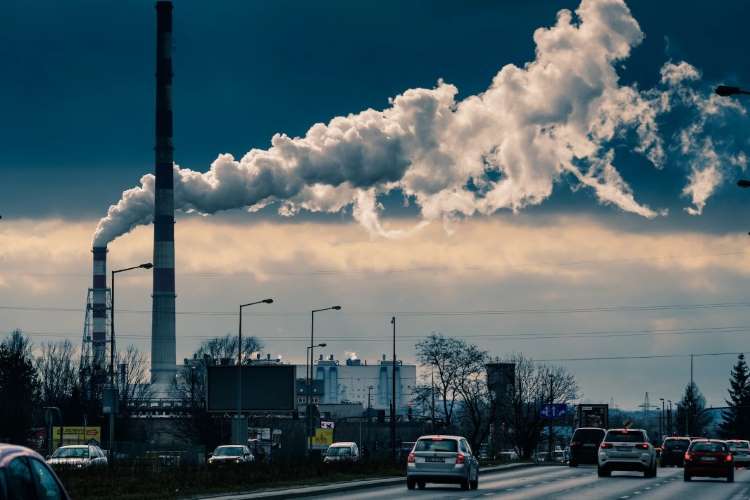
The pursuit of progress often coincides with the depletion of natural resources and diminished quality of life. While civic infrastructure is essential for national growth, prioritising it over environmental well-being and human health raises concerns about our long-term vision. Historically, India’s urban centers like Harappa, Mohenjo-Daro, Delhi, and Agra have been hubs of culture, trade, and governance. Modern urbanisation took shape during British colonial rule, with cities like Mumbai and Kolkata emerging as administrative and economic hubs.
Post-1947, India promoted urbanisation to spur economic growth, leading to the sprouting of urban centers nationwide. Recently, the IT and service sectors have amplified urbanisation, with cities like Bengaluru and Hyderabad evolving into global tech hubs. This urban growth, however, came at a price. The cities are grappling with hazardous pollution levels, endangering lives, and diminishing their quality.
READ I Air pollution in Mumbai: Construction activity and vehicular emissions to blame
Infrastructure strain, health risks
India’s swift urbanisation has resulted in infrastructure strain, crowded housing, traffic woes, and limited access to basic services. Environmentally, it has contributed to pollution, deforestation, and resource depletion. Health risks, particularly respiratory ailments, have increased. The widening wealth gap also leaves marginalised communities without essential services, hindering social mobility. These issues underscore the importance of comprehensive urban planning.
For instance, Mumbai‘s high population density leads to overstretched infrastructure, heavy traffic, and tight living quarters. Balancing economic advancement with environmental sustainability remains a challenge, directly affecting its residents’ health and daily life. Bengaluru’s IT boom has ushered in a surge of inhabitants, taxing its resources and infrastructure. Daily traffic snarls, dwindling water supplies, and waste management issues underscore the challenges of its rapid development.
Cities are more than concrete expanses; they are vibrant hubs where millions reside. Beyond grandeur and ambition, cities must prioritise the well-being of their citizens, providing affordable housing, clean surroundings, quality healthcare, and inclusive education.
Challenges to urbanisation
India must harmonise development with sustainability. This equilibrium demands robust urban planning, embracing renewable energy, and enforcing environmental norms. Investing in green energy, effective public transport, and eco-friendly urban designs can curb pollution and combat climate change. While initiatives like India’s renewable energy targets and the Clean India Campaign are commendable, real change stems from individual habits rather than solely relying on civic systems.
Alongside the evident infrastructural and environmental changes, urbanisation also brings about subtle shifts in the socio-cultural fabric of cities. Traditionally, Indian societies have been rooted in tight-knit communities, each with its distinct customs, festivals, and ways of life. Rapid urbanisation can sometimes dilute these traditions, replacing them with a more cosmopolitan culture. This is not inherently negative, but there is a pressing need to ensure that in the race for modernity, the rich tapestry of India’s diverse cultural heritage is not lost.
One aspect of urbanisation that often goes undiscussed is its effect on India’s vast rural populace. As cities expand and prosper, they inadvertently draw talent and youth away from villages, leading to a brain drain in rural areas. This migration exacerbates existing disparities, leaving rural areas with aging populations, fewer opportunities, and limited resources. Addressing the urban-rural divide is crucial. Efforts should be made to ensure that the benefits of development permeate through the entire nation, rather than being concentrated in urban pockets.
Sustainable urban development cannot be achieved through a top-down approach. For cities to truly thrive and be sustainable, it is essential that the very people who live in them have a say in their design and growth. City planning should incorporate feedback from its residents, ensuring that urban projects cater to the real needs of the community.
Urbanisation, powered by the quest for prosperity, has reshaped our cities with towering skyscrapers, lively streets, and tech-driven lifestyles. But we must ask: Is this urbanisation genuinely improving our life quality? True well-being goes beyond economic metrics—it includes clean air, verdant spaces, and community bonding. As we navigate our urban labyrinths, we should evaluate whether our cities genuinely cater to their inhabitants’ health and happiness. Genuine progress should not sacrifice the environment or people’s well-being. Today’s decisions will mold India’s future, potentially making it a beacon of balanced progress for the world.
Srinath Sridharan is a strategic counsel with 25 years experience with leading corporates across diverse sectors including automobiles, e-commerce, advertising and financial services. He understands and ideates on intersection of finance, digital, contextual-finance, consumer, mobility, Urban transformation, and ESG. Actively engaged across growth policy conversations and public policy issues.

